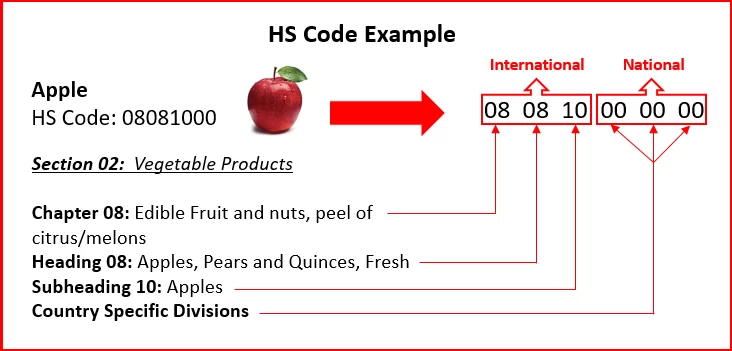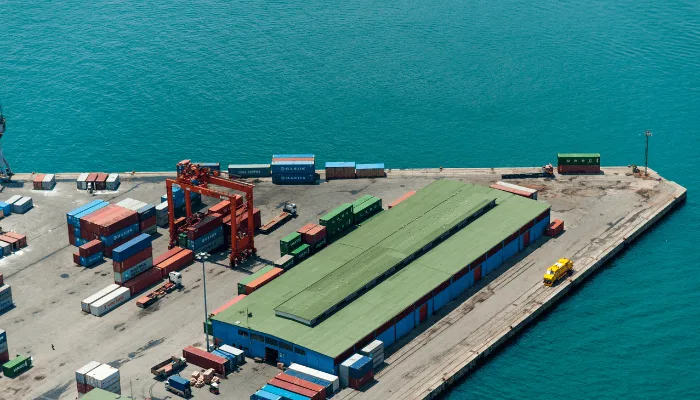
Understanding HS Codes in Chemical and Petrochemical Exports (2025 Guide)
Introduction
In international trade, one of the most overlooked yet critical elements is the Harmonized System (HS) Code. For chemical and petrochemical exporters—whether shipping PE100B, monoethylene glycol (MEG), or base oil SN150—getting the HS code right can make the difference between a smooth customs clearance and costly delays.
HS Codes are globally recognized numbers that classify goods for customs purposes. They determine tariffs, trade statistics, and compliance requirements. Exporters in the Middle East, particularly in Iran, Saudi Arabia, and the UAE, must master HS code classification to compete effectively in Asia, Europe, and Africa.
This article explains what HS codes are, why they matter in chemical and petrochemical exports, and how exporters can avoid common mistakes.
1. What Are HS Codes?
HS Codes are internationally standardized 6-digit numbers created by the World Customs Organization (WCO). Each product traded across borders is assigned a code that identifies its nature and category.
For example:
HS Code 2905.11: Methanol
HS Code 2905.32: Monoethylene glycol (MEG)
HS Code 3901.20: Polyethylene (HDPE, PE100 grades)
HS Code 2710.19: Base oils (e.g., SN150, SN500)
Beyond the first 6 digits, individual countries often expand to 8 or 10 digits for tariff details.
2. Why HS Codes Matter in Petrochemical Exports
Exporters dealing with monoethylene glycol suppliers, PE100B producers, or base oil traders must use the right HS code because:
Customs Clearance: Incorrect codes can delay shipments or even cause seizure.
Tariffs and Duties: HS codes determine how much import duty is applied.
Trade Data Accuracy: Governments rely on HS codes for official statistics.
Compliance: Many free trade agreements (FTAs) use HS codes to determine eligibility for reduced tariffs.
3. Common HS Codes in Chemical & Petrochemical Exports
| Product | Typical HS Code | Notes |
|---|---|---|
| Monoethylene Glycol (MEG) | 2905.32 | Widely used in textiles, antifreeze |
| Polyethylene (PE100, PE80) | 3901.20 | Pipes, films, packaging |
| Base Oil SN150 | 2710.19 | Lubricant blending |
| Solvents (e.g., Solvesso 100) | 2707.30 | Used in paints, coatings |
| Methanol | 2905.11 | Bulk petrochemical export |
4. Regional HS Code Considerations
Asia (China, India, Vietnam): Often use additional 2–4 digits for local tariff rates.
Europe (EU): Applies Combined Nomenclature (CN) codes, which expand HS codes to 8 digits.
Middle East & CIS: Many follow WCO but add their own extensions (e.g., Turkey’s GTIP system).
Exporters from Iran shipping PE100B to Turkey, for example, must ensure they declare the correct GTIP HS code to avoid reclassification.
5. Mistakes Exporters Must Avoid
Using generic HS codes instead of precise classifications.
Declaring the same product under different HS codes to reduce duties.
Ignoring changes in HS revisions (e.g., the 2022 HS Code update introduced new categories for petrochemicals).
Not aligning commercial invoices and packing lists with the HS code used in customs documents.
6. How to Correctly Classify HS Codes
Consult official tariff schedules of the importing country.
Work with a licensed customs broker or freight forwarder.
Use tools like the WCO HS database or local customs HS code search engines.
Stay updated with annual HS code revisions that may affect chemicals and petrochemicals.
7. Future Outlook for HS Codes in Petrochemical Exports
With increasing trade digitization and AI-powered customs clearance, exporters can expect:
Automated classification systems that reduce errors.
Stricter compliance checks under global trade agreements.
Possible introduction of environmental tariffs linked to HS codes for petrochemicals with higher carbon footprints.
FAQs
Q1: What happens if I use the wrong HS code for monoethylene glycol exports?
Shipments may be delayed, fined, or seized, and customs records could reflect non-compliance.
Q2: Are HS codes the same in all countries?
The first 6 digits are standardized, but the remaining 2–4 digits vary by country.
Q3: Do HS codes affect monoethylene glycol price or PE100B price?
Indirectly yes—duties, tariffs, and compliance costs affect the final monoethylene glycol price and PE100B price buyers pay.
Q4: How often are HS codes updated?
The WCO updates the HS system every 5 years, but local tariff schedules may change annually.

Looking for suppliers in Iran?
- Contact Us today and get connected with producers and export-ready logistics.
- sales@PetroExportHub.com

Related posts
Mono Ethylene Glycol (MEG) serves as a cornerstone for modern antifreeze and coolant formulations, offering reliable freezing protection and heat resi . . .
Explore Solvent 100’s specs, uses, and export opportunities from Iran. Ideal for paint, ink, and adhesive buyers in India, Turkey, UAE, and Africa. . . .
Explore everything you need to know about exporting sulphur from Iran in 2024 — including types, packaging, documents, ports, prices, and top import . . .
Explore Iran’s top ports for petrochemical exports, including Bandar Imam Khomeini, Assaluyeh, and Bandar Abbas. Compare infrastructure, accessibili . . .
Learn the key differences between polypropylene (PP) and polyethylene (PE), their applications, advantages, and how to choose the right polymer for yo . . .
Discover how a Turkish plastics manufacturer reduced costs by 22% through importing HDPE from Iran. Real-world case study by PetroExportHub. . . .
Learn why Iran is a leading exporter of polyethylene (PE). Discover grades, global applications, and how PetroExportHub connects buyers with top suppl . . .
We are here to answer your questions....
Petro Export Hub
PetroExportHub specializes in the export of premium-grade petrochemicals, minerals, and industrial chemicals from Iran, serving international markets with reliability, transparency, and tailored logistics solutions
Tehran Office
Phone:
0214865484 | +989127607241
Address:
Tehran..
China Office
TEL :
0211400
Address:
Zhongzhou Bie Lu, Zhongcheng Street, Yiwu City, Zhejiang Province, China
Quick Access
Quick Access
- Contact Our Sales Team
- Frequently Questions
- Shipping & Logistics
- Become a Partner
- Certificatins & Quality







